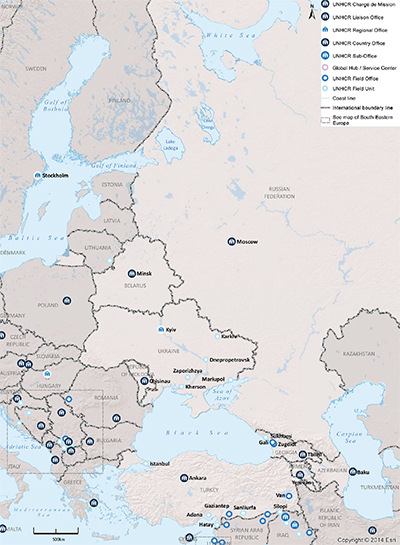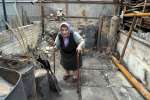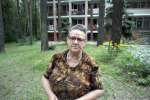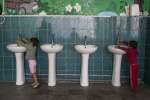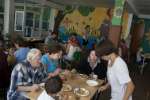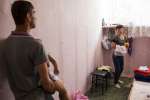Home > Where We Work > Europe > Eastern Europe > Ukraine
2015 UNHCR subregional operations profile - Eastern Europe
| Overview |
Major challenges in Eastern Europe for UNHCR are often linked to the priority given by governments to political and social considerations, which can leave national asylum systems either dysfunctional or lagging far behind international standards. Recognition rates generally remain fairly low, and some countries are resorting to complementary forms of protection instead of recognition based on the 1951 Convention relating to the Status of Refugees. Resettlement continues to be the only durable solution for many people of concern.
The impact of the conflict in the Syrian Arab Republic (Syria) has also been felt in the subregion, particularly in Turkey. The continued mass influx of refugees has placed considerable pressure on the country's protection and response capacity. In addition to Syrian refugees, there are increasing numbers of arrivals from Afghanistan and Iraq: more than 81,000 refugees had arrived in Turkey by September 2014, with the overall number of new arrivals expected to reach 100,000 by the end of 2014.
The second year of implementation for the Asylum Systems Quality Initiative in Eastern Europe and the Southern Caucasus (QIEE) has positively affected the national asylum systems at both institutional and individual levels.
Positive developments in Eastern Europe included accession by Ukraine and the Republic of Moldova to the UN's Statelessness Conventions, while the latter is also working towards statelessness determination procedures. Georgia has acceded to the 1961 Convention on the Reduction of Statelessness and started a status determination procedure. The Russian Federation's adoption of an amendment to its citizenship law aims to address statelessness. It estimated that Eastern Europe hosts around 250,000 stateless people.
UNHCR protects and assists internally displaced people (IDPs) in most countries in the region. The growing humanitarian needs in Ukraine require an urgent response. As of mid-September, more than 275,000 people had been displaced in Ukraine. Some 172,000 people had applied for asylum in neighbouring countries in Europe, including more than 168,000 people in the Russian Federation. A further 149,000 applied for other forms of legal stay in the Russian Federation.
In addition to newly emerging situations, UNHCR's work in Eastern Europe will focus on:
-
Strengthening national asylum systems, including by improving legislative frameworks and procedures and increasing the capacity of local authorities, while continuing direct interventions where needed.
-
Continuing the search for durable solutions, with a focus on return and local integration.
-
Advocating the prevention and reduction of statelessness, as well as accession to the UN Statelessness Conventions, and supporting relevant national legislation and procedures.
-
Further developing partnerships with Governments and other stakeholders on refugee protection and mixed migration.
-
Engaging with UNDP and other development and humanitarian partners to improve the livelihoods of people of concern.
| Response and implementation |
The operation in Turkey is presented in a separate country chapter. For other countries in which UNHCR operates in the subregion, please see below.
In Armenia, UNHCR will assist the authorities in building their asylum institutions. It will help to strengthen the national legal framework governing the protection of refugees and stateless people so that it is in line with international standards. Focused assistance will be provided to the most vulnerable individuals, and local partners and institutions will be mobilized to support refugees' local integration. UNHCR will continue to contribute to collective efforts by the Government, UN agencies and the NGO community to meet the needs of approximately 12,000 people displaced from Syria who found protection in Armenia.
The Office will cooperate with the authorities in Azerbaijan to strengthen the national asylum system. It will seek an amendment to the current refugee legislation that establishes a subsidiary protection mechanism. Vulnerable refugees in urban areas will receive assistance. At the same time, UNHCR will advocate the protection of IDPs and provide them with free legal aid and self-reliance assistance. UNHCR will support the Government's commitment to identify the scope of statelessness in the country and establish a statelessness determination procedure.
The intent of Belarus, the Republic of Moldova and Ukraine to comply with European standards provides UNHCR with opportunities for constructive engagement. Focus areas will include: enhancing compliance with international standards, particularly on protection-sensitive approaches to asylum based on the QIEE; continuing protection monitoring to ensure access to territory and asylum procedures; using resettlement as a protection tool; mapping statelessness and developing a statelessness determination procedure (Ukraine), and supporting the implementation of a new statelessness determination procedure (the Republic of Moldova); as well as encouraging Governments to assist extremely vulnerable people. UNHCR's engagement with the judiciary will remain vital. The IDP situation in Ukraine necessitated adjustments to the operation, with a focus on providing technical advice to the Government on a variety of protection issues and relevant legislation, enhancing protection monitoring and assuring humanitarian assistance for the most vulnerable IDPs. This situation is likely to continue into 2015.
In Georgia, the strategy will also focus on the effective implementation of national and international legislation, and efforts to protect and improve the living conditions of displaced people. It will include: monitoring the protection situation while providing limited direct assistance; pursuing durable solutions for refugees through naturalization and local integration; seeking local integration for IDPs pending their return; advocating the harmonization of national legislation and more assistance to IDPs, with attention on livelihoods for people of concern in Abkhazia, the reduction of sexual and gender-based violence (SGBV), and the provision of legal aid to all IDPs; and monitoring the progress and implementation of transitional livelihood programmes.
In the Russian Federation, UNHCR will focus on quality assurance measures to strengthen the national asylum system, including improving access to the system at borders, and will seek to enhance partnership with the authorities. The Office will pursue durable solutions by helping improve legal and social avenues for integration, while providing others, including those with particular vulnerabilities, with resettlement options. UNHCR's cooperation with the Russian authorities will focus on finding solutions for long-staying asylum-seekers who have been unable to regularize their situation in the country. The organization will continue to advocate measures to reduce statelessness, both within and outside the borders of the Russian Federation. It will also seek easier access to citizenship for former USSR citizens, as well as accession by the Russian Federation to the 1954 and 1961 Statelessness Conventions.
| Financial information |
Between 2011 and 2015, UNHCR's financial requirements in Eastern Europe have fluctuated from USD 84.6 million in 2011 to a 2015 budget of USD 365.7 million. The financial requirements in Turkey have risen dramatically, as they have, to a lesser extent, in Armenia, Georgia and some other countries. Excluding Turkey, the 2015 subregional budget amounts to USD 45.5 million, compared to USD 46.5 million in 2014.
Since 2011, the subregion has seen decreases in several operations' budgets, primarily due to UNHCR's gradual withdrawal from direct operational involvement with IDPs in a number of countries. However, the response to the IDP situation in Ukraine in 2014 explains the overall budget increase.
| UNHCR 2015 budgets for Eastern Europe (USD) | |||||
|---|---|---|---|---|---|
| Operation | 2014 Revised budget (as of 30 June 2014) |
2015 | |||
| Refugee programme PILLAR 1 |
Stateless programme PILLAR 2 |
IDP projects PILLAR 4 |
Total | ||
| Total | 353,033,895 | 353,739,292 | 2,425,566 | 9,527,290 | 365,692,148 |
| 1. Includes activities in Belarus and Republic of Moldova. | |||||
| Armenia | 5,255,334 | 6,122,127 | 102,341 | 0 | 6,224,468 |
| Azerbaijan | 5,851,001 | 4,324,490 | 328,525 | 1,196,986 | 5,850,001 |
| Georgia | 14,351,540 | 5,458,157 | 556,293 | 8,330,304 | 14,344,755 |
| Russian Federation | 7,092,269 | 5,722,246 | 358,406 | 0 | 6,080,652 |
| Turkey | 306,553,430 | 320,091,960 | 70,000 | 0 | 320,161,960 |
| Ukraine Regional Office[1] | 13,930,322 | 12,020,312 | 1,010,001 | 0 | 13,030,313 |
Source: UNHCR Global Appeal 2015 Update
UNHCR contact information
| The UNHCR Regional Representation | |||||||||||||||
|---|---|---|---|---|---|---|---|---|---|---|---|---|---|---|---|
| Style of Address | The UNHCR Regional Representative in Ukraine | ||||||||||||||
| Street Address | 14, Lavrska Street, 01015 Kyiv, Ukraine | ||||||||||||||
| Mailing Address | 14, Lavrska Street, 01015 Kyiv, Ukraine | ||||||||||||||
| Telephone | 380 44 288 9424 | ||||||||||||||
| Facsimile | 380 44 288 9850 | ||||||||||||||
| Website | http://www.unhcr.org.ua | ||||||||||||||
| ukrki@unhcr.org | |||||||||||||||
| Time Zone | GMT + 2 | ||||||||||||||
| Working Hours |
|
||||||||||||||
| Public Holidays | 01 January 2015, New year's day 07 January 2015, christmas (orthodox) 09 March 2015, International women's day 12 April 2015, Orthodox easter monday 01 May 2015, Labour day 11 May 2015, victory and commemoration day 01 June 2015, Orthodox Trinity 24 August 2015, Independence day Ukraine 23 September 2015, eid al adha 25 December 2015, Christmas |
||||||||||||||

